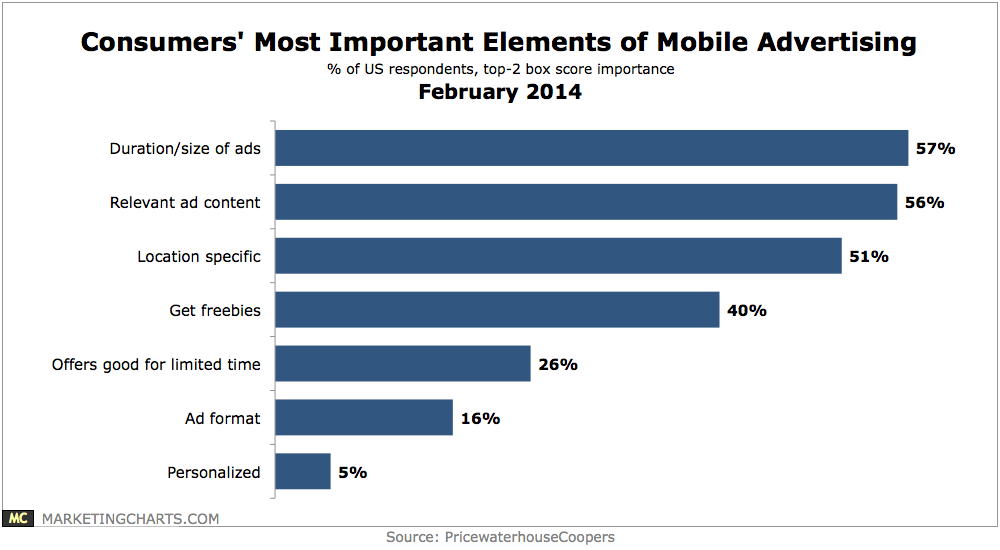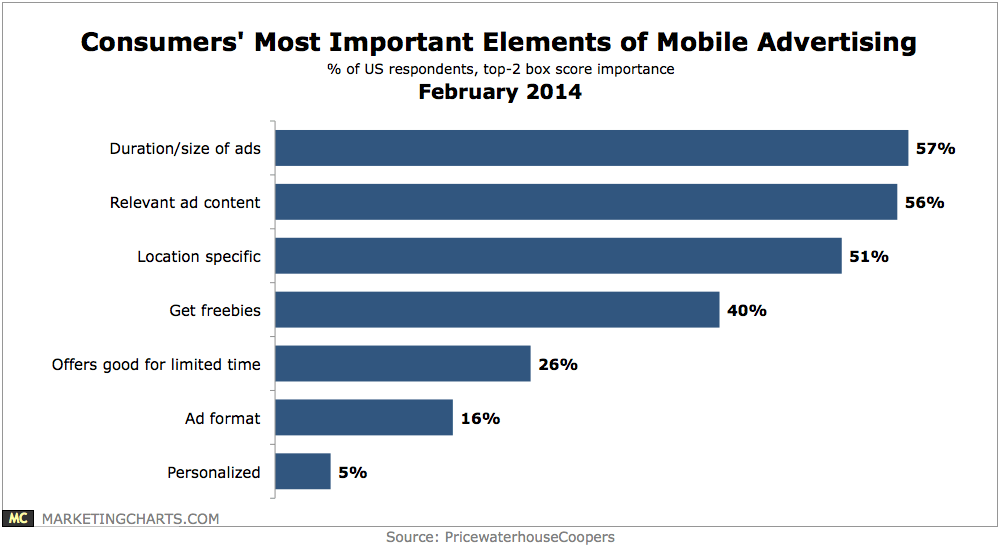
Research: Consumers Not Enchanted By BLE Proximity Marketing
February 26, 2014 by Dave Haynes

Here’s a nice tall glass of cold water in the flushed faces of people yelling omni-channel and mobile integration from the digital signage rooftops.
Research from PricewaterhouseCoopers (PwC) suggests the great unwashed out there aren’t at all enchanted by the notion of walking through stores and public spaces and getting jack-hammered with ads, coupons and calls to action on their phones, via Bluetooth Low Energy (like Apple’s iBeacons).
A story on MarketingCharts suggests:
“.. to avoid alienating mobile consumers, advertisers also need to be concerned about the frequency of targeting. And on this front, the results aren’t pretty. The study indicates that “even with the assumption of ad relevancy,” a majority 56% of respondents don’t want to ever be targeted on their devices. After that, 22% said weekly, 12% monthly, and just 10% daily. Interestingly, while respondents aged 50 and up were more likely to say they never want to be targeted, those that were open to targeted ads were more accepting of frequent targeting than their younger counterparts.
So how do consumers prefer to be targeted? Most commonly, it seems, by their interests (54%), although many find targeting by location (44%) to be tolerable. Fewer are drawn to targeting by previous online purchase history (25%), based on the types of websites visited on their phone (24%) and based on the types of websites visited on their PCs or tablets (19%).
Finally, with all those preferences, formats, and elements for advertisers to digest, here are consumers’ top concerns about mobile advertising that advertisers need to be careful about avoiding:
- That they cross the line into personal space (30%);
- That they not be able to turn the ads off (24%);
- That they are too intrusive on their lifestyle (18%);
- That there are too many (18%); and
- That they are not relevant (6%).
Clearly, these survey respondents are more concerned with their privacy than they are with the ads themselves. Lots of barriers, it seems, for advertisers to overcome.
The research was based on a survey of 1,003 US consumers last fall, skewing female and the 25-49 age bracket.
So, yes BLE is intriguing, but so was plain old Bluetooth proximity marketing when it came out. And it went almost nowhere because it was a complicated opt-in thing, and people were not all that enthused about opting in to coupon spam.
NFC has it issues in terms of device penetration, but as been noted here and elsewhere and demo’d, consumers decide if they want to pull something, not if they want to receive whatever.
Hat Tip To Paul Flanigan at DSA for flagging this piece …



Leave a comment